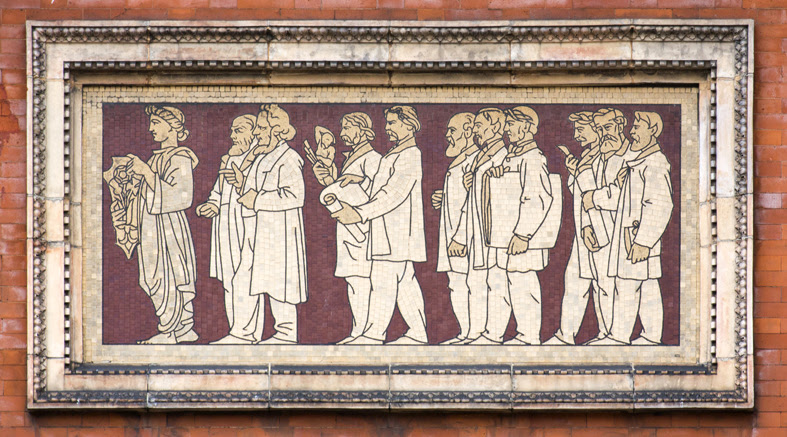The image below is one that has intriqued me for a long time. Every since I worked at the V&A and started giving Guided tours I have looked at this and wondered who they all are. Henry Cole, the first Director is the third person from the left. This article identifies others as Francis Fowke and Godfrey Sykes. I imagine others include Gamble and Poynter. The fifth person is thought to be Kiplings Father. Salon IFA wrote this about him. Lockwood Kipling: Punjab and London John Lockwood Kipling (1837–1911), writes Julius Bryant FSA introducing a weighty book which accompanies a new exhibition, ‘is part of the fabric of the Victoria and Albert Museum.’ Artist, writer, museum director, teacher, conservationist and influential Arts and Crafts figure, Lockwood has been the subject of a three-year international research project led by V&A Senior Research Fellow Sandra Kemp. Bryant, who is Keeper of Word and Image at the V&A, and Susan Weber FSA , f
